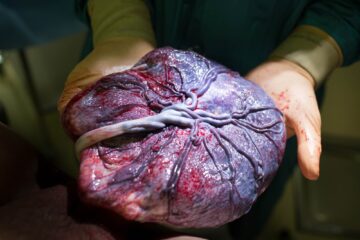Claire Porter in Undark:
 WHEN MANA PARAST was a medical resident in 2003, she had an experience that would change the course of her entire career: her first fetal autopsy. The autopsy, which pushed Parast to pursue perinatal and placental pathology, was on a third-trimester stillbirth. “There was nothing wrong with the baby, it was a beautiful baby,” she recalled. We’re not done, she remembers her teacher telling her, go find the placenta.
WHEN MANA PARAST was a medical resident in 2003, she had an experience that would change the course of her entire career: her first fetal autopsy. The autopsy, which pushed Parast to pursue perinatal and placental pathology, was on a third-trimester stillbirth. “There was nothing wrong with the baby, it was a beautiful baby,” she recalled. We’re not done, she remembers her teacher telling her, go find the placenta.
The placenta, a temporary organ that appears during pregnancy to help support a growing fetus, didn’t look as it should. Instead, it “looked like a rock,” said Parast. As far as they could tell, no one had ever examined this patient’s placenta through her pregnancy, and it was her fifth or sixth stillbirth, Parast recalled. Every year, there are approximately 5 million pregnancies in the United States. One million of those pregnancies end in miscarriage, and more than 20,000 end in stillbirth. Up to half of these pregnancy losses have unidentified causes. Recent and ongoing research, though, suggests that the placenta may hold the key to understanding and preventing some pregnancy complications, such as preterm birth and maternal and infant mortality. A closer look at the placenta — including its size and function — may have a significant impact on stillbirth rates.
More here.
